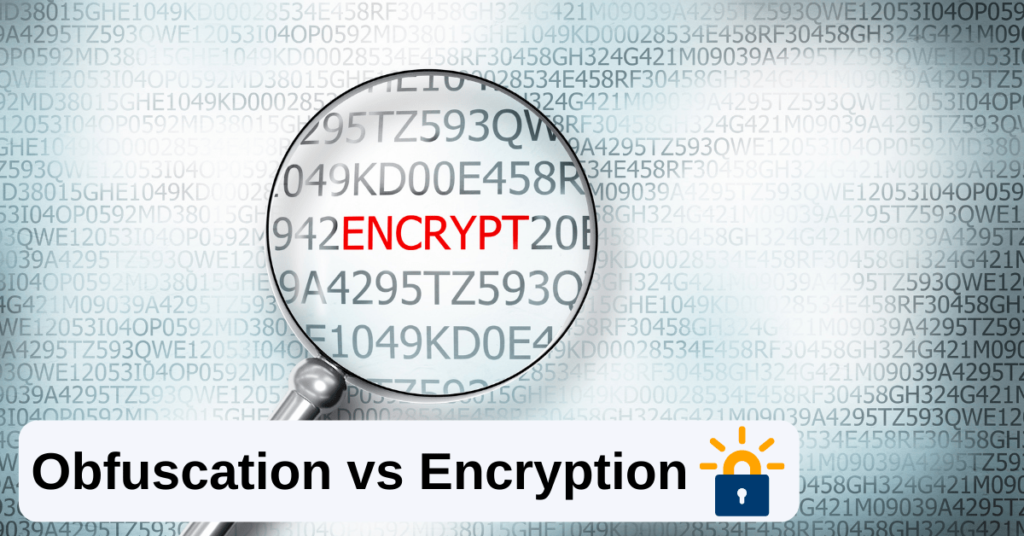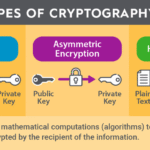In the landscape of digital security, the terms “encryption” and “obfuscation” often emerge in discussions surrounding data protection. They are frequently misconstrued as interchangeable concepts, yet a closer examination reveals substantial differences that merit further exploration. This analysis poses a critical question: Does encryption always imply obfuscation? To answer this, one must first understand the underpinning principles of both phenomena and their distinctive characteristics.
Encryption is a robust method of transforming information into a format that is unreadable to unauthorized users. By employing algorithms and keys, plaintext is converted into ciphertext, rendering the data incomprehensible without the appropriate decryption mechanisms. This complexity ensures a high level of security but necessitates the reliance on cryptographic keys, which are pivotal for the retrieval of the original information.
In stark contrast, obfuscation refers to a technique where the original information is not necessarily hidden but is instead made more difficult to interpret or understand. It deliberately introduces confusion or ambiguity to the data without the foundational structure of cryptography. This can involve altering variable names in computer code or utilizing misleading identifiers. The principal objective of obfuscation is to deter attackers from easily deciphering the logic or intention behind the code, rather than offering substantial security against data breaches.
One might ponder: if both encryption and obfuscation serve the purpose of protecting sensitive information, can we consider them allies in the fight against digital threats? The reality is nuanced, as each method presents its own advantages and limitations. For instance, encryption is designed to withstand various attacks, including brute force attempts, while obfuscation primarily seeks to complicate the understanding of the data.
Moreover, encryption guarantees confidentiality and integrity. It ensures that even if the data is intercepted, it remains illegible without the decryption key. In contrast, obfuscation does not inherently safeguard the integrity of information. An obfuscated piece of data can still be subject to alterations if an adversary manages to manipulate the underlying code or data. Thus, the question arises: can one rely solely on obfuscation for genuine data protection? The answer is contingent upon the context of implementation.
The efficacy of obfuscation can vary significantly based on the specific scenarios in which it is deployed. For example, in source code protection, obfuscation can effectively obscure the source files from reverse engineering. However, this method may fall short against more determined adversaries with sufficient resources and expertise. Security through obscurity, which is often a component of obfuscation, carries the inherent risk that once the obscurity is lifted, the system’s vulnerabilities are exposed. Hence, the temporary deterrent can quickly metamorphose into a long-term security liability.
When evaluating these two concepts further, it is essential to examine their applications in modern cybersecurity frameworks. Security experts frequently advocate for multi-layered approaches, integrating both encryption and obfuscation to fortify data protection. This duality capitalizes on the strengths of each method, thereby elevating overall security. Such strategies foster a defense-in-depth philosophy, where if one layer is compromised, the other remains intact, thereby mitigating potential risks.
Moreover, practical implementations of encryption and obfuscation exhibit fundamental variances, particularly in performance and usability. Encryption processes can be resource-intensive, demanding significant computational power depending on the algorithm’s complexity. This is particularly evident in constrained environments like mobile devices, where heavy encryption tasks can diminish user experience. Conversely, obfuscation techniques, while may not provide the same level of security, often impose less of a performance burden.
Nevertheless, the legal and ethical implications of employing such techniques also warrant scrutiny. Activation of encryption can trigger governmental oversight, especially regarding encryption policies where regulators may impose strictures on data encryption practices. In contrast, obfuscation methods, given their less stringent nature concerning legal constraints, may provide a more agile solution for developers aiming to secure intellectual property without provoking regulatory scrutiny.
In summary, while encryption and obfuscation share the common goal of enhancing data security, they encompass fundamentally different processes. Encryption ensures data confidentiality, integrity, and authenticity through complex mathematical transformations, whereas obfuscation seeks primarily to confuse and mislead potential attackers without providing robust security guarantees. Therefore, the notion that encryption always implies obfuscation is a misconception. Instead, each method should be evaluated based on the particular requirements and threats faced.
The challenge lies in discerning when to employ encryption, when to utilize obfuscation, and how to effectively combine both methodologies to protect sensitive information. Vigilance, technical expertise, and a comprehensive understanding of the threats at hand are essential in crafting a formidable defense against the ever-evolving landscape of digital threats. Ultimately, businesses and individuals alike must remain astutely aware that in the realm of data protection, it is not only the methods employed that matter, but also the context in which they are applied.









Leave a Comment